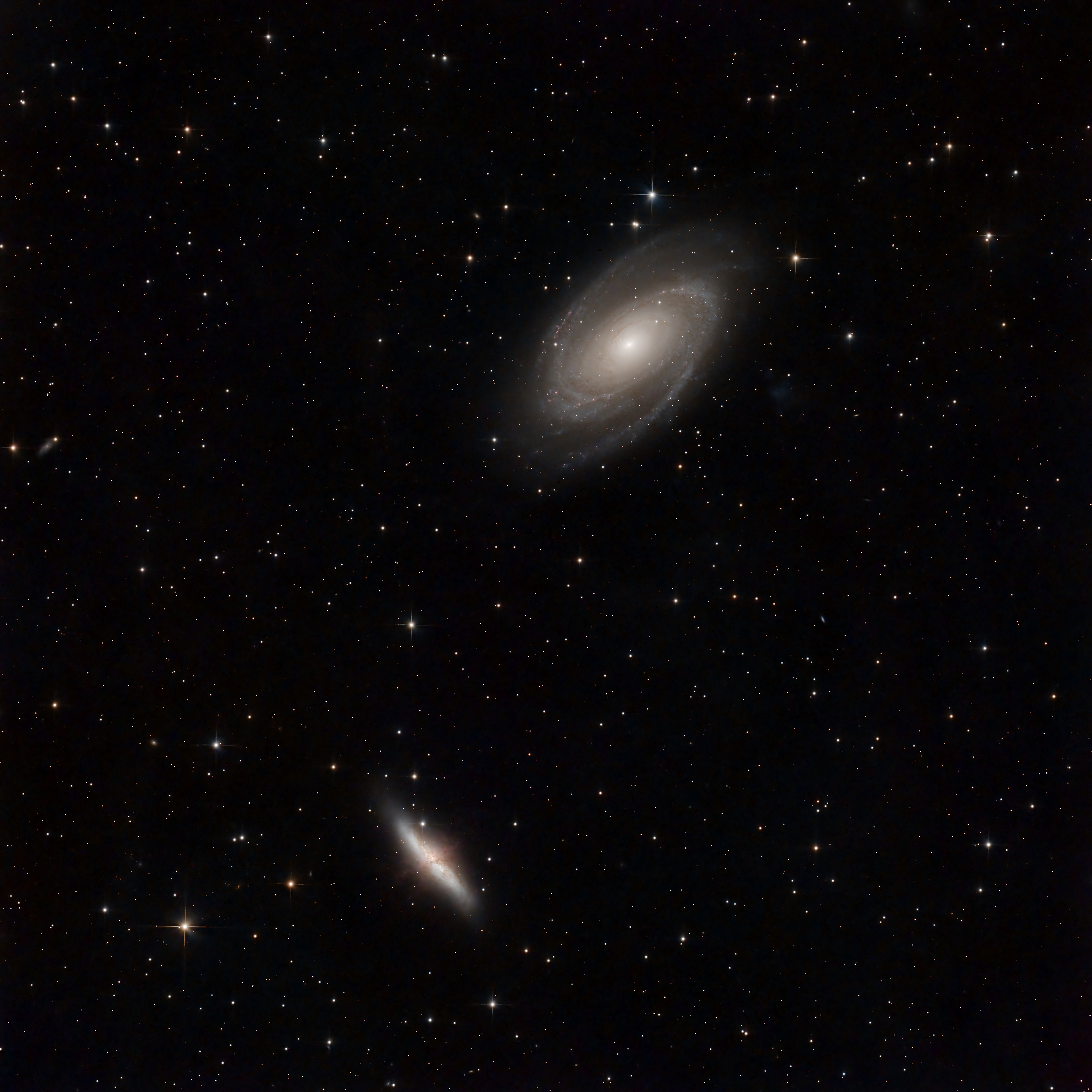

To enlarge or reduce the picture size, on a computer hold down the Ctrl key and, using a mouse, scroll in or out.
M81 and M82 GALAXIES on 2023-12-17+18+25+26+27
This photo was taken in my backyard in Kyle, Texas through a 6-inch Sky-Watcher f/4 Telescope, on a Sky-Watcher EQ6-R mount, with a ZWO ASI533MC PRO color camera using an Optolong L Pro Light Pollution Filter. The total image acquisition time is: 10 hours 40 minutes 00 Seconds.
Messier 81 and Messier 82 galaxies are part of the M81 Group, a group of 34 galaxies in Ursa Major and Camelopardalis constellations. Due to the distance of approximately 11 to 12 million light years from Earth, this group together with the Local Group (containing the Milky Way) are relative neighbors in the Virgo Supercluster of galaxies. M81 was discovered initially in 1774 by Johann Bode, a German astronomer famous for determining the orbit of Uranus. Because of this M81 is sometimes referred to as Bode's Galaxy. In 1779 Pierre Méchain together with Charles Messier re-discovered the object and included it in the Messier Catalogue. M81 is a grand spiral galaxy with a very active nucleus. It hosts a super-massive black hole with a mass of about 70 million times the mass of our Sun. Running straight through the disk are some dusty lanes which reflect a likely violent past encounter with M82 (estimations are that this encounter happened between 50 and 100 million years ago). Due to its close encounter with M81, M82 has been dramatically deformed. M82 has also left traces of this encounter in the spiral pattern of M81, the brighter and larger galaxy. M82 is sometimes called the Cigar galaxy due to its edge on view from Earth. M82 is the brightest galaxy in the sky in infrared light. It is a lot brighter in infrared than in the visible part of the spectrum. It is a starburst class galaxy that has been caught in a gravitational struggle with M81 for possibly a billion years or more. M82 is famous for its heavy star forming activity. Around 100 newly formed globular star clusters have been discovered in this galaxy. Many of the newly formed stars are so massive that they live a relatively short life and then explode as supernovas driving gas and matter out of the galaxy at speeds of millions of kilometers per hour. It is thought that in this way, elements like oxygen and carbon are spread through the universe.
Previous Photos
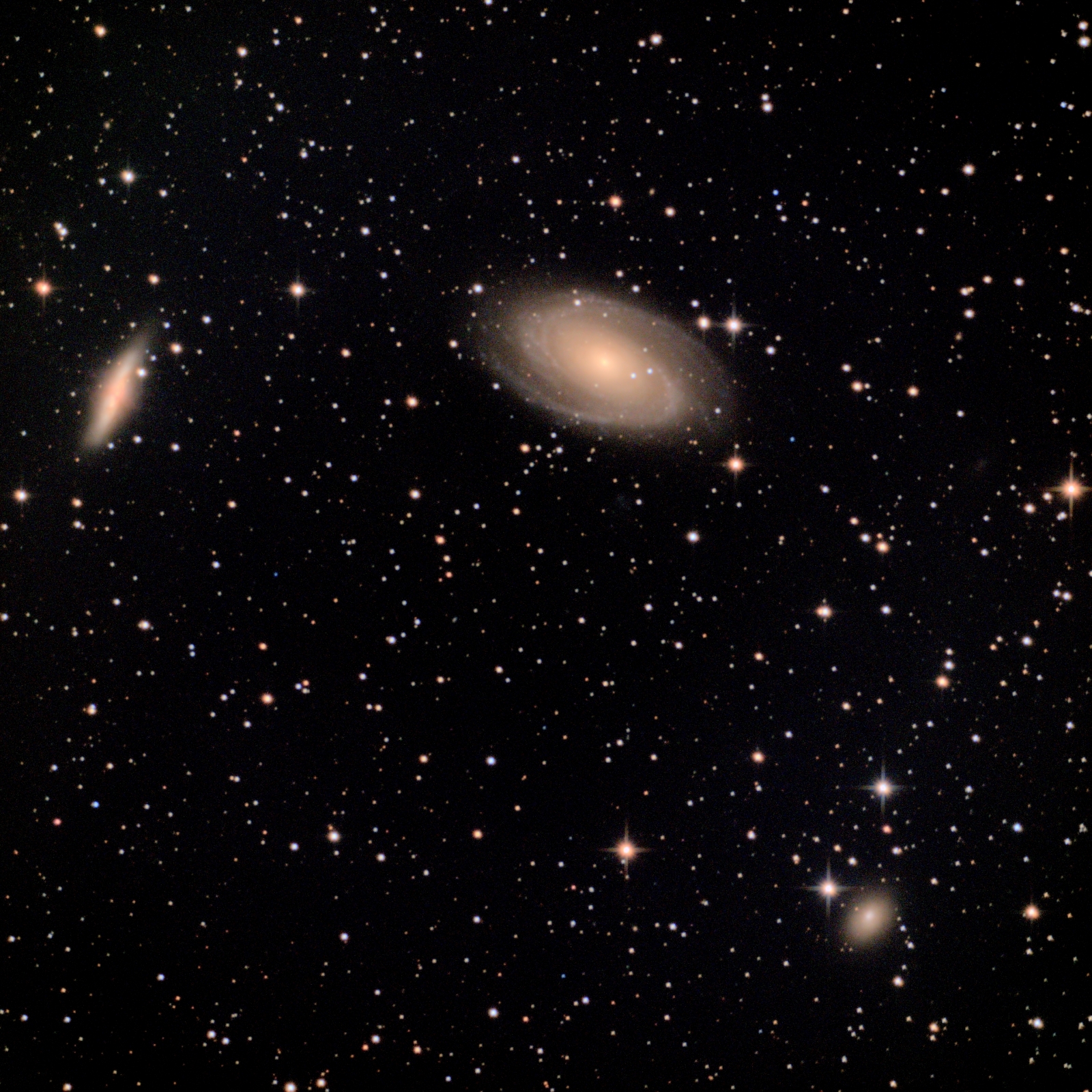
M 81 & M 82 GALAXIES WITH THE SMALLER GALAXY NGC 3077 on 2023-01-19
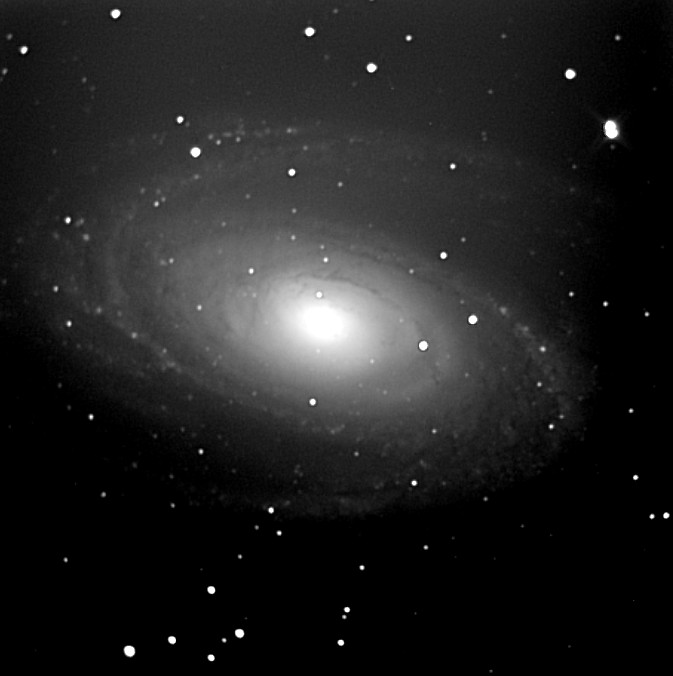
M 81 on 2008-02-27
Taken with my 17.5 inch scope and SBIG ST-9E CCD camera.
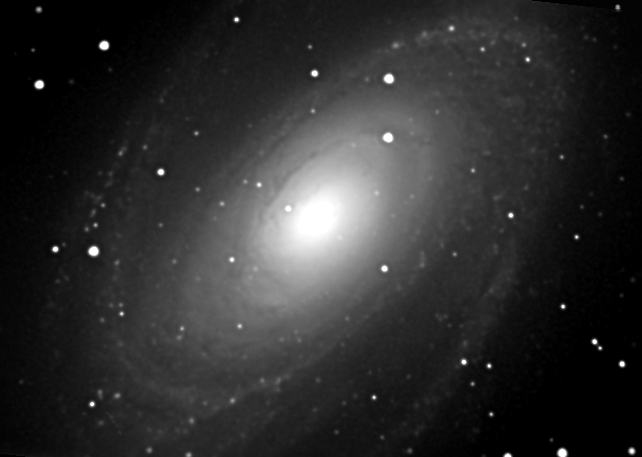
OBJECT = 81
TELESCOPE = 17.5 inch f3.23
CAMERA = ST7-E
OBSERVER = Rusty Fletcher
LOCATION = Seguin Outdoor Learning Center
DATE (Yr-Mo-Dy) = 2004-12-10
TIME (UT) = 10:07:49
TOTAL EXPOSURE = 540 sec
IMAGES STACKED = 18
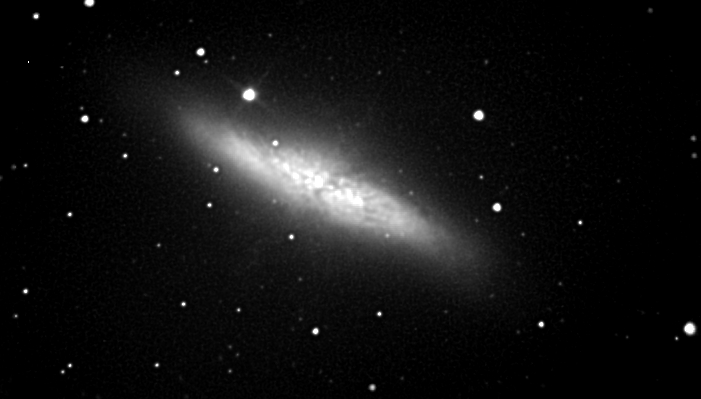
M 82 on 2004-12-10
OBJECT = 82
TELESCOPE = 17.5 inch f3.23
CAMERA = ST-7E
OBSERVER = Rusty Fletcher
LOCATION = Seguin Outdoor Learning Center
DATE (Yr-Mo-Dy) = 2004-12-10
TIME (UT) = 10:50:12
TOTAL EXPOSURE = 450 sec
IMAGES STACKED = 15